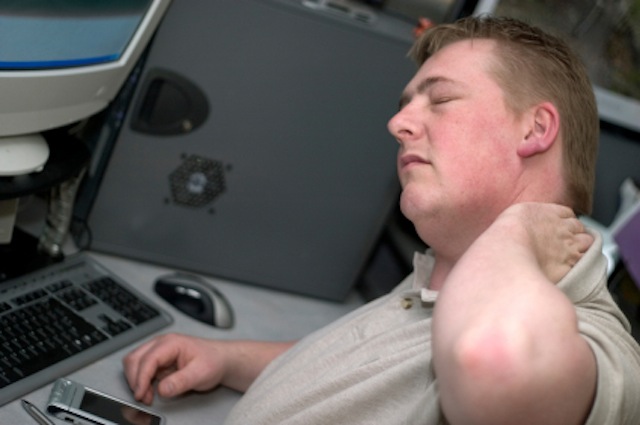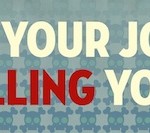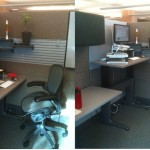Ergonomics – a work topic where the little things matter. Check out this guest post from Gina M. Casillo where she identifies 4 killers of office ergonomics.
Changing a few elements of your workspace can make a big difference
Work can be hard enough as it is, but the ergonomics of your office might be making it a great deal worse. While it may be the norm for many Americans, you shouldn’t come home from work aching and tense every day. To follow up on Cube Dweller Fitnessís exercise tips, here are four notorious killers of office ergonomics that may be making your work life harder than it needs to be.

Don't let your office ergonomics become a pain in the neck.
Killer #1 – Poor Lighting
Ergonomics is the discipline of improving tools to better conform to human comfort, and your office’s fluorescent lighting may be the least ergonomic thing you interact with on a daily basis. Particularly in the winter, your body craves warm, natural lightóand that deficit is the main contributor to seasonal depression, anxiety, and fatigue (also known as Seasonal Affective Disorder). If you spend most of your day in a windowless cubicle farm, though, you might be experiencing those symptoms year-round. You might not even realize it is happening, but a desk lamp that produces the full spectrum of light can make a real difference.
Killer #2 – Office Chair

Your office chair is probably the most obvious ergonomic menace in your daily routine. If you have consistent back pain from white-collar work, you probably need (at least) a better office chair. It should be a no-brainer, like your bed-sheets or a decent pair of shoes, you’re going to be spending a lot of time in your office chair, so you want to make sure you’re comfortable. The aches and stiffness that you get from a bad office chair can add up to long-term muscle weakness and vulnerability to back injury, as well as nerve damage and varicose veins. Surprisingly, a basic ergonomically adjustable chair has been shown in clinical studies to reduce eye problems. Buy a chair with good lumbar support, making sure the seat pan is deep enough that your thighs are fully supported to the knee, but not too deep for you to rest your lower back flush against the lumbar support.
Killer #3 – Computer Display
This is a small adjustment that can make a big difference for your comfort at the end of the workday. If you have chronic neck pain at work, move your display so that itís about 20 inches away from your face, with the top of the display about at your eye level. If you have to slouch or crane your neck to view your display, adjust the display until you can sit up straight comfortably. Remember, ergonomics is all about making your office tools fit you, not the other way around. Brightness and display size can also be a factor in discomfort. If you get headaches or eyestrain, switch out your CRT monitor for an LCD and opt for a smaller display if possible. Dialing down your monitorís brightness (not too much, you shouldnít have to strain to see what you’re doing) can reduce chronic headaches at work.
Killer #4 – Your Keyboard Position
If you come home from work with sore fingers or wrists, don’t ignore it you might be seriously damaging the muscles and nerves in your hands, and it is a relatively simple problem to fix. When you type, your fingers should be gently curved, your elbows bent, and your wrists straight. Working from a laptop can make this difficult, so you might want to invest in an external keyboard and mouse if your laptop is your primary work computer. Ideally, your office desk should have a sliding tray for your keyboard. These are invaluable because they allow you to adjust the exact height and depth of the keyboard in relation to your body so you can sit comfortably. Special ergonomic keyboards have not shown to benefit the average typist, but theyíre no worse than a standard one. If it is more comfortable for you, by all means, use one; but if not, stick with your regular keyboard.





Want to discuss? Join the conversation CubeDwellerFitness's Facebook Page.